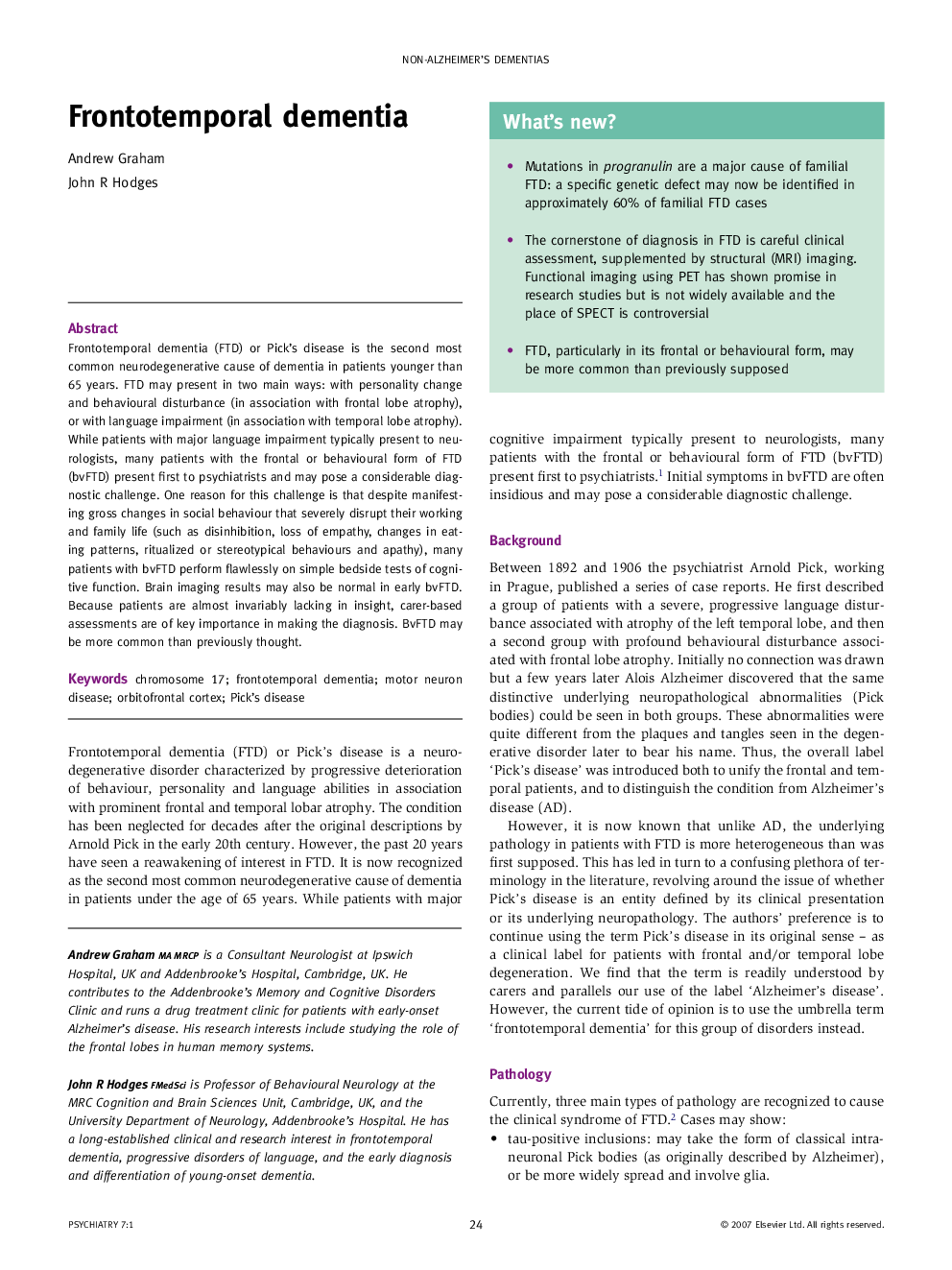| Article ID | Journal | Published Year | Pages | File Type |
|---|---|---|---|---|
| 4190078 | Psychiatry | 2008 | 5 Pages |
Frontotemporal dementia (FTD) or Pick’s disease is the second most common neurodegenerative cause of dementia in patients younger than 65 years. FTD may present in two main ways: with personality change and behavioural disturbance (in association with frontal lobe atrophy), or with language impairment (in association with temporal lobe atrophy). While patients with major language impairment typically present to neurologists, many patients with the frontal or behavioural form of FTD (bvFTD) present first to psychiatrists and may pose a considerable diagnostic challenge. One reason for this challenge is that despite manifesting gross changes in social behaviour that severely disrupt their working and family life (such as disinhibition, loss of empathy, changes in eating patterns, ritualized or stereotypical behaviours and apathy), many patients with bvFTD perform flawlessly on simple bedside tests of cognitive function. Brain imaging results may also be normal in early bvFTD. Because patients are almost invariably lacking in insight, carer-based assessments are of key importance in making the diagnosis. BvFTD may be more common than previously thought.
